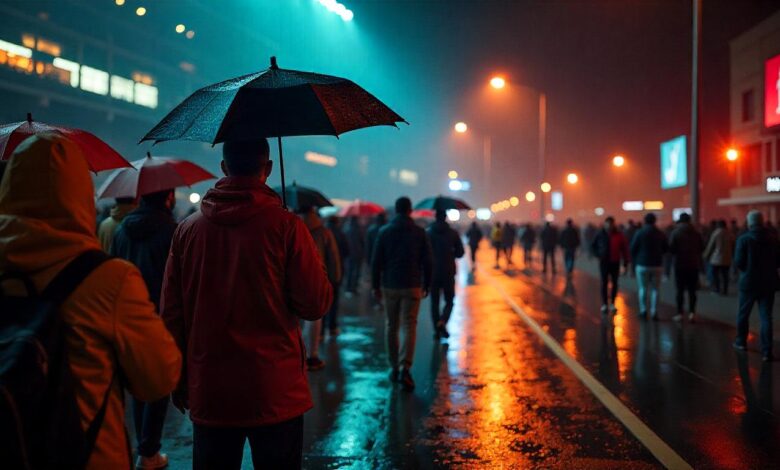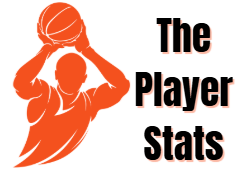The Garden Effect: How Home Court Impacts Performance in the East

When the bright lights of Madison Square Garden flicker on and the crowd buzzes with anticipation, there’s more than just a game being played. It’s a ritual, a history, a palpable energy that seeps into the bones of every player who steps onto that hardwood. The Garden is not just an arena—it’s a stage where legends are born and myths are preserved. Across town, the TD Garden in Boston carries its own storied aura. Here, every bounce echoes decades of rivalry, pride, and basketball excellence. In the Eastern Conference, few things shape the storylines more than these two iconic courts. The Garden Effect—this potent mixture of pressure, inspiration, and crowd influence—shapes player performance in ways that transcend statistics. Yet, numbers do tell a part of the story.
Contents
The Weight of History at Madison Square Garden
Madison Square Garden, often heralded as the “World’s Most Famous Arena,” is steeped in history. From the Knicks’ championship runs in the 1970s to unforgettable playoff moments, MSG is a cathedral of basketball. Players talk about the hum of the crowd, the banners hanging from the rafters, and the weight of every step they take on the court. For some, this is fuel; for others, a crushing pressure.
Reggie Miller’s memorable battles in MSG are etched into NBA lore. Known for his clutch shooting, Miller seemed to thrive in hostile arenas but felt the intensity of MSG like no other. His ability to rise to the occasion came not just from skill but from a psychological embrace of the moment. This psychological edge is often reflected in player stats: many stars tend to elevate their scoring and shooting percentages when playing on their home courts, especially in places like MSG where the crowd is both a support and a challenge.
Fast forward to today’s Knicks, where players like Jalen Brunson carry the legacy forward. Brunson’s shooting splits tell a story familiar to many—better efficiency at home, a more aggressive mindset when backed by the raucous MSG crowd. The Garden Effect is not a myth; it’s measurable in subtle ways: fewer turnovers, increased free throw attempts, and higher shooting percentages at home compared to away games.
The Parquet Legacy at TD Garden
Just a few miles away, TD Garden’s parquet floor holds a different kind of magic. The Boston Celtics’ home is a shrine to teamwork, grit, and championship pedigree. The parquet floor itself is a symbol—one that players swear by as a source of inspiration and a reminder of legends like Larry Bird, Paul Pierce, and Bill Russell.
Larry Bird, in particular, turned the Garden into a fortress during his prime. His ability to read the game and dominate under the bright Boston lights is legendary. Bird’s home game stats were always impressive, a reflection of both comfort and confidence that came with playing in front of a passionate crowd. The Celtics have built on that culture, and the Garden remains a place where players feed off the energy of decades of fans who expect nothing less than intensity.
Current Celtics stars such as Jayson Tatum and Jaylen Brown often demonstrate improved performances at home, with noticeable bumps in shooting efficiency and defensive metrics. The Garden crowd’s energy creates an atmosphere where opponents sometimes feel overwhelmed, leading to higher pressure situations that can sway momentum in Boston’s favor.
Knicks vs. Celtics: A Clash of Garden Titans
Few rivalries capture the essence of the home court effect like the Knicks versus Celtics. When these two teams meet, it’s not just about the players or the scoreboard; it’s about the arenas, the fans, and the history that permeates every possession.
In recent matchups, the momentum often shifts dramatically depending on where the game is played. At MSG, the Knicks feel emboldened by their crowd’s fervor, translating to a boost in clutch shooting and aggressive defense. Conversely, the Celtics leverage the quiet intensity of their fans at TD Garden to disrupt the visitors’ rhythm.
Take a recent Knicks vs. Celtics game as a snapshot: while overall shooting percentages might have been similar, the Knicks took more high-risk shots energized by their home crowd, resulting in a flurry of exciting plays and lead changes. Meanwhile, the Celtics at home played a tighter, more disciplined game, feeding off their familiarity with the court and the expectations of a storied franchise.
Though these games provide a glimpse, the Garden Effect transcends individual matchups. It’s the feeling players describe—a buzz in the air, a shared experience with tens of thousands of fans that transforms ordinary athletes into warriors for a night.
The Psychological Edge of Playing at Home
Beyond the numbers and highlights, the Garden Effect has a profound psychological dimension. Studies in sports psychology reveal that home court advantage is more than just cheering fans; it involves familiarity with the arena, reduced travel fatigue, and even the subtle benefits of rituals—like a favorite warm-up routine or hearing familiar announcers.
In places like MSG and TD Garden, the emotional stakes are heightened. The crowd’s energy can bolster confidence and sharpen focus, helping players enter a flow state where performance peaks. Conversely, visiting players often grapple with the hostility of these arenas, which can disrupt concentration and increase anxiety.
This dynamic is especially potent in the Eastern Conference, where rivalries are intense and history weighs heavily on every contest. The Garden Effect amplifies the mental game, turning a physical contest into a psychological battle where crowd noise, tradition, and the aura of the arena tip the scales.
Player Perspectives on the Garden Effect
Players across generations have commented on the unique pressures and inspirations of these legendary courts. Kevin McHale once said about TD Garden, “When you play here, you feel the history. It’s not just a game; it’s part of something bigger.” Similarly, Carmelo Anthony, a Knicks icon, described MSG as “where legends are made and dreams can feel both close and far away.”
These sentiments reveal a deep respect for the Garden Effect. It’s a reminder that basketball in the East is more than numbers on a stat sheet—it’s about legacy, community, and the power of place.
Measuring the Impact: Stats vs. Spirit
While it’s tempting to analyze home court advantage purely through statistics, the Garden Effect defies simple quantification. Yes, players tend to shoot better, make fewer mistakes, and show improved stats at home. But these numbers only hint at the intangible forces at work—the adrenaline rush, the electric crowd, the sense of belonging.
For example, an analysis of Knicks players over the past decade shows an average of 5-7% higher field goal percentage at MSG compared to road games. Celtics players demonstrate similar trends at TD Garden. But the true impact lies in moments: a clutch shot that ignites the crowd, a defensive stop that swings momentum, or a roar that drowns out doubt.
Conclusion: The Garden Effect Lives On
As the NBA continues to evolve with new stars and shifting power dynamics, the Garden Effect remains a constant—a thread that connects generations of players and fans. Madison Square Garden and TD Garden are more than just buildings; they are living museums of basketball history and emotion.
Whether it’s a rookie finding their footing or a veteran embracing the spotlight, the power of these legendary home courts shapes performances and mindsets in the Eastern Conference. The Garden Effect is the soul of the game in New York and Boston, a reminder that sometimes, where you play matters just as much as how you play.





